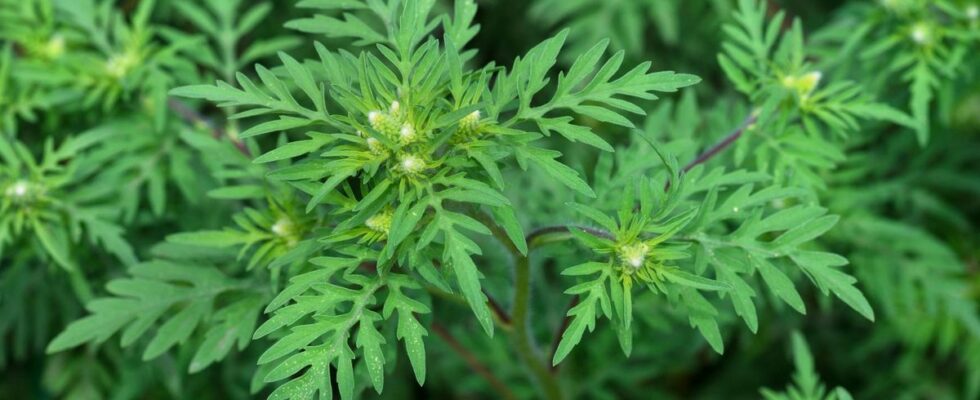Published on
updated on
Reading 3 min.
Despite the end of the summer holidays, the risk of allergies remains high in the Rhone Valley due to ragweed. The pollens of this wild plant are particularly irritating.
Risk of allergy: 12 departments see red
If you currently have a runny nose or itchy eyes, you are probably allergic to this type of pollen. According to the RNSA, the National Aerobiological Surveillance Network, ragweed pollen concentrations are at a high level in 12 departments of the Rhône Valley, from Nièvre to Gard. In the surrounding departments, the risk of allergy is medium. The sunny, hot and windy weather will promote the dispersion of pollen in the air in the coming days.
Like other pollens, ragweed pollen can cause seasonal allergic rhinitis, with symptoms such as tracheitis, dry cough, and even asthma attacks. In addition, the eyes and skin are not spared, sometimes with allergic conjunctivitis and skin conditions such as hives or eczema.
⚠️POLLEN ALERT⚠️🤧
Ragweed pollen is attacking hard this week, especially along the Rhone Valley!😥
The forecast maps show very strong concentrations for the end of August: https://t.co/ZKwESsXdO2
If you are allergic, take precautions😷💊 pic.twitter.com/SCDYpNhCBy— National Aerobiological Surveillance Network (@rnsa_pollen) August 27, 2024
The risk of allergy will be lower for other flowering herbaceous plants (grasses, plantain, mugwort and nettles (urticaceae)) even if in certain departments the mixture of these pollens could raise the overall risk of allergy to the average level.
As with all allergies, there are a few simple rules to follow to avoid too much exposure to ragweed pollen. It is important to:
- Rinse your hair in the evening;
- Ventilate your home for at least 10 minutes a day before sunrise and after sunset;
- Do not dry your laundry outside;
- Keep your car windows closed while driving;
- Avoid outdoor sports activities;
- Avoid mowing your lawn;
- Avoid making your symptoms worse by adding irritants or allergens (tobacco, cleaning products, etc.).
Here are the right steps to take to protect yourself from pollen and limit your exposure: regularly consult the pollen alert map on our website, rinse your hair in the evening, air out your homes before sunrise and after sunset if possible… pic.twitter.com/f4c5lNDrzc
— National Aerobiological Surveillance Network (@rnsa_pollen) February 15, 2024
A tenacious plant despite several control plans
Very present in Rhône Alpes, this invasive plant is gradually spreading throughout the national territory. Ragweed colonizes various types of land such as bare soil, gardens, roadsides or waterways, agricultural crop areas, vacant land or construction sites. On non-agricultural land, the best control technique is the revegetation of the soil which limits the possibilities for the plant to develop. A plan to combat ragweed was created in 2011…
To prevent the production of pollen and limit the reproduction and expansion of the plant, ragweed plants must be systematically destroyed, as a priority before flowering, which occurs from the end of July to October.
Destruction can be done by repeated uprooting, mowing or mowing carried out only on areas contaminated by ragweed. As a last resort, chemical control can be used in a reasoned manner, using approved products and following the instructions for use. For small areas, manual uprooting is an effective technique (wearing gloves is recommended).
If you identify these plants on the roadside, it is recommended to report their presence on the reporting platform ambrosia.fr. Once a ragweed plant is observed, it must be quickly eliminated because it is difficult to eradicate once seeds have been produced (up to 5000 seeds per plant, which persist in the soil for up to 50 years).
